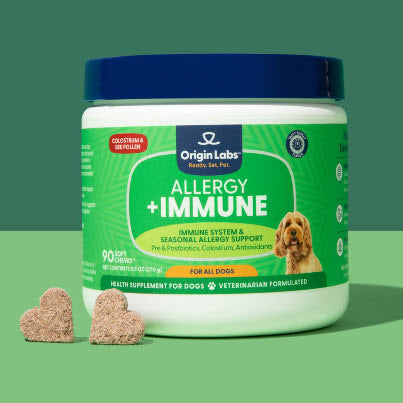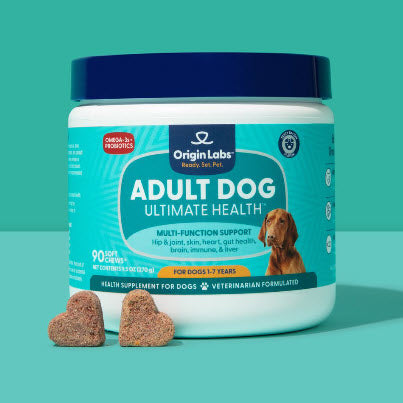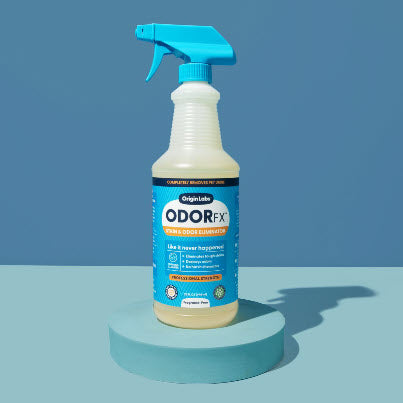Introduction
Pet owners often ask, can dogs eat sardines, and the answer is yes. Sardines can be a nutritious addition to a dog's diet. These small fish are packed with essential nutrients that can offer a range of health benefits for canines. However, it's crucial for dog owners to understand both the advantages and potential risks involved in feeding sardines to their furry friends.
Sardines for dogs come in various forms, and each carries its own set of considerations. Knowing how to choose the right type of sardines and the proper way to include them in your dog’s meals is key to ensuring they contribute positively to your pet’s health. This article provides an overview of feeding sardines to dogs, covering:
- The nutritional value sardines offer, highlighting vitamins, minerals, and omega-3 fatty acids.
- Potential safety concerns, including mercury content and whether it's better to choose raw or canned options.
- Best practices for serving size, frequency, and preparation methods.
- Guidance on selecting the best type of sardines for your dog.
- The importance of consulting with a veterinarian before making dietary changes.
For those interested in supporting their dog's overall health beyond just diet, consider exploring health supplements for puppies and adult dogs offered by Origin Labs. These supplements are specifically formulated to provide health support based on your dog's age, whether they are a growing puppy or an adult.
The Nutritional Value of Sardines for Dogs
If you've ever wondered why sardines are popular in many dog diets, the answer lies in their rich nutritional profile. Nutritional benefits of sardines for dogs are numerous, thanks to a cocktail of key vitamins, minerals, and omega-3 fatty acids they contain.
Why Sardines are Healthy for Dogs
Sardines are small oily fish known for their unique blend of nutrients that can boost a dog's health in several ways. These nutrients support a variety of bodily functions ranging from muscle development to immune response.
Key Vitamins and Minerals in Sardines
The benefit of feeding your furry friend sardines starts with the essential vitamins and minerals these little fish provide. Here's a closer look at some of them:
- Vitamin B12: This vitamin plays a crucial role in nerve function and the production of DNA and red blood cells. A deficiency can lead to severe health complications like anemia.
- Vitamin D: As a fat-soluble vitamin, Vitamin D helps regulate the balance and absorption of calcium and phosphorous, promoting healthy bones and teeth.
- Calcium: Speaking of bones, calcium is vital for building strong bones and teeth. It also aids nerve transmission and muscle function.
- Selenium: This is a powerful antioxidant that protects body cells from damage. It also supports the immune system and thyroid health.
- Phosphorus: Working hand-in-hand with calcium, phosphorus plays an essential role in maintaining strong bones and teeth.
- Iron: Iron is necessary for the formation of hemoglobin, a protein that carries oxygen from the lungs to all parts of the body.
It's impressive how much nutrition is packed into such small creatures!
Omega-3 Fatty Acids in Sardines
Beyond these vitamins and minerals, sardines are revered for their high content of omega-3 fatty acids. Omega-3s are essential fats that dogs can't produce themselves, hence the need for dietary intake.
These fats offer a wealth of benefits:
- Joint Health: Omega-3s help reduce inflammation, which can alleviate symptoms in dogs with arthritis.
- Skin and Coat Health: Regular intake of omega-3s can lead to a shinier coat and healthier skin. It's a natural way to combat dry skin and other related conditions.
- Brain Function: DHA, a specific type of omega-3, is critical in brain development in puppies, and aids cognitive function in adult dogs.
- Heart Health: Omega-3s contribute to heart health by helping to manage blood pressure and reduce triglycerides.
The fact that sardines are an excellent source of these fatty acids makes them an excellent addition to any dog's diet.
Potential Risks and Drawbacks of Feeding Sardines to Dogs
While sardines can be a nutritious addition to a dog's diet, it is essential to be aware of the potential risks and drawbacks associated with feeding these small fish to our canine companions. Addressing safety concerns can help pet owners make informed decisions.
Raw vs. Canned Sardines: Which is Safer for Dogs to Eat?
Raw Sardines
- Parasites and Bacteria: Raw fish can contain harmful parasites and bacteria that may cause illness in dogs.
- Preparation Caution: When considering raw sardines, thorough inspection for bones is crucial as they can pose a choking hazard or cause internal damage.
Canned Sardines
- Sodium Content: Many canned sardines contain high levels of sodium, which is not suitable for dogs, especially those with heart conditions.
- Additives: Dogs should avoid canned sardines with added flavors or sauces, such as tomato sauce or mustard, which could upset their stomachs.
- Packaging Oil: Sardines packed in oil may lead to unnecessary fat consumption; water-packed sardines are a healthier alternative.
Given these considerations, canned sardines in water, with no added salt or flavorings, tend to be the safer option when appropriately portioned.
Understanding the Potential Risks or Drawbacks
The presence of mercury in sardines is a notable concern when including this fish in a dog's diet. Although sardines are considered one of the fish with lower mercury content due to their small size and lower position on the food chain, it remains vital to understand how mercury can affect dogs:
Mercury Toxicity
- Accumulation Over Time: Mercury can accumulate in a dog's system over time leading to health issues.
- Symptoms: Signs of mercury poisoning include loss of coordination, blindness, seizures, and even death.
When integrating sardines into a dog's diet:
- Moderation is Key: Limiting the frequency and quantity of sardine consumption can mitigate the risk of mercury exposure.
- Source Matters: Selecting sardines from clean waters and reputable sources helps reduce potential contamination risks.
It is important for dog owners to weigh these risks against the nutritional benefits. Ensuring that any dietary inclusion aligns with an individual dog's needs and health profile will contribute significantly to their overall well-being. Consulting with a veterinarian about appropriate dietary changes can provide additional safety assurance.
Through careful consideration of both the benefits and potential risks associated with feeding dogs sardines, pet owners can take steps towards offering a balanced and safe diet.
Feeding Sardines to Your Dog: Best Practices and Precautions
Incorporating sardines into your dog's diet can be a great way to boost their intake of essential nutrients. However, it's crucial to adhere to some guidelines to ensure that this addition is both safe and beneficial.
Determining the Right Serving Size and Frequency
The amount of sardines your dog can safely consume depends on several factors, including their size, weight, and overall health. As a general rule:
- Small Dogs (up to 10 pounds): A quarter of a sardine is sufficient.
- Medium Dogs (10-25 pounds): Half a sardine will do.
- Large Dogs (25-50 pounds): One whole sardine is an appropriate serving size.
- Extra-Large Dogs (over 50 pounds): They can have up to two sardines.
For the frequency of feeding sardines:
- Occasional Treat: Once or twice a week is often enough for most dogs.
- Regular Dietary Supplement: Consult with your vet for tailored advice.
Remember that these are just starting points. Adjustments may be necessary based on your dog’s specific dietary needs and any existing health conditions.
Preparation and Serving Methods
To maximize the nutritional benefits while ensuring safety, follow these steps when preparing sardines for your dog:
- Choose the Right Sardines: Opt for those packed in water or natural oils like olive oil rather than those in sauces or seasonings.
- Cooking: If you're using fresh sardines, cook them thoroughly to kill any harmful bacteria.
- Bone Removal: Although sardine bones are generally soft and edible, it’s safer to remove them to prevent any choking hazard or intestinal blockage.
- Serving Temperature: Make sure the sardines are cool enough to prevent any burns or discomfort.
Canned Sardines
When serving canned sardines:
- Ensure they are free from additional flavorings or high sodium content.
- Rinse them under water if they were preserved in salt to reduce sodium intake.
Fresh Sardines
For fresh sardines:
- Cook without adding any harmful ingredients like garlic or onions which are toxic to dogs.
- Check thoroughly for leftover bones before serving.
Freeze-Dried Sardines
Freeze-dried options provide a convenient alternative without the need for preparation:
- Verify they’re made specifically for pets and don't contain additives.
By adhering closely to these preparation methods, you can help maintain the integrity of the nutrients in sardines while keeping your canine companion safe from potential risks.
Safe Integration into Meals
When introducing sardines into your dog's diet:
- Start with a small portion as an occasional treat.
- Monitor your dog's reaction over the next 24 hours for any signs of digestive upset or allergies.
- Gradually increase the serving size following the guidelines above if there are no adverse reactions.
It’s important not to let sardines replace a significant portion of your dog’s regular diet but rather complement it. They should primarily consume well-balanced commercial pet food formulated for their specific life stage and health requirements.
Tailored Nutritional Support
For dogs with special dietary needs due to health conditions such as sensitive stomachs, supplements like Belly Buddies Probiotics can offer additional support by promoting a healthy balance of gut bacteria. These probiotics are specifically designed for canine digestive systems and come with dosage instructions based on weight, making them easy to integrate alongside new dietary elements like sardines.
By following these best practices and precautions, you provide your dog with the nutritional benefits of sardines while minimizing potential risks. Always keep in mind that each dog is unique; what works well for one may not be suitable for another. When in doubt, seek advice from a professional veterinarian.
Choosing the Right Type of Sardines for Your Dog
When adding sardines to your dog's diet, it's important to pick the right kind for safety and maximum health benefits. There are different types of sardines available, each with its own advantages and things to think about.
Canned Sardines
Canned sardines are the easiest option for most dog owners. You can find them in almost any grocery store, and they come in different varieties such as water-packed, oil-packed, or with sauces like tomato or mustard.
Pros:
- Easy storage: Canned sardines have a long shelf life and don't need to be refrigerated until you open them.
- Convenience: They're ready to eat and simple to serve without any preparation.
Cons:
- Added ingredients: Some canned sardines have extra salt, oils, or flavorings that may not be good for dogs.
- Possible BPA exposure: The lining in certain cans might contain BPA, which can get into the food.
Fresh Sardines
Fresh sardines are a natural alternative to canned ones and can be a great source of nutrients if you prepare them correctly.
Pros:
- No preservatives: Fresh sardines don't have any additives or preservatives like canned ones do.
- Control over preparation: You can cook fresh sardines in a way that suits your dog's health needs best.
Cons:
- Availability: Depending on where you live, fresh sardines may not be easy to find all year round.
- Preparation time: They need to be cleaned and cooked before serving, which can take some time.
Freeze-Dried Sardines
Freeze-dried sardines for dogs have become popular as a convenient treat that keeps most of the nutritional value without the messiness of fresh fish.
Pros:
- Long shelf life: Freeze-drying preserves the sardines without needing refrigeration.
- Retains nutrients: This process keeps most of the vitamins, minerals, and omega-3 fatty acids that fresh sardines have.
Cons:
- Cost: They can be more expensive than other types of sardines.
- Less moisture: Dogs who need more hydration may not get as much benefit from freeze-dried options.
Comparing Types
When deciding between different sardine products for dogs, think about your pet's diet needs, any existing health issues, and what they like to eat. Here are a few examples:
- Weight management: If your dog needs to watch their weight, water-packed canned or fresh sardines with less fat and calories might be better.
- Convenience: Canned or freeze-dried options could be a good fit if you want something easy; just make sure to check the labels for harmful additives.
It's important to understand the pros and cons of each type of sardine — canned, fresh, or freeze-dried — based on what your dog needs. Always go for the simplest option possible with little to no added salt, sauces, or preservatives. And remember to introduce any changes to their diet slowly so you can watch out for any negative reactions.
Consulting a Vet: The Importance of Professional Guidance
Before making significant dietary changes for your pet, such as introducing sardines, it is essential to consult with a professional. Veterinarians are equipped with the knowledge and experience to provide personalized advice based on your dog's unique needs.
Dogs, like humans, have different nutritional requirements and health conditions. As such, what may be beneficial for one dog might not be suitable for another. This is particularly true when it comes to feeding sardines to dogs with allergies or digestive sensitivities.
Why Consult a Vet?
The question that often arises among dog owners is, "Can dogs have sardines in oil?". While sardines can be a healthy addition to a dog's diet due to their rich omega-3 fatty acid content, the type of oil used can potentially pose risks. Some oils used in canned sardines, like sunflower oil or soybean oil, are high in omega-6 fatty acids which can contribute to inflammation if consumed in excess. A vet's guidance will not only help answer these concerns but also ensure that the benefits outweigh the potential risks of feeding sardines to dogs.
Precautions When Feeding Sardines
If your dog has allergies, certain types of fish including sardines might trigger an allergic reaction. Symptoms of food allergies in dogs include itching, swelling, and digestive issues. Therefore, if you notice any abnormal behavior after feeding your dog sardines, it’s crucial to seek veterinary attention immediately.
Dogs with digestive sensitivities might also react differently to sardines. Although they are easy on the stomach compared to some other types of fish due to their small size and soft bones, some dogs might still experience discomfort or indigestion.
Here are some guidelines:
- Introduce Sardines Gradually: If it's your dog's first time eating sardines, start with small portions and observe any changes or adverse reactions.
- Monitor Your Dog: Keep a close eye on your dog after feeding it sardines. If you notice any symptoms like vomiting, diarrhea, or lack of appetite, it might be best to discontinue feeding sardines and consult your vet.
While this information provides a general guideline, remember that every dog is unique. Therefore, the safest approach is to always seek professional guidance before making any dietary changes for your pet. It's not just about answering the question "Can dogs eat sardines?", but more importantly understanding if and how sardines can be included in your dog's diet in the safest and most beneficial way.
Conclusion
To summarize, sardines can indeed be a healthy and beneficial addition to a dog's diet. They are packed with essential nutrients such as vitamins, omega-3 fatty acids, and minerals that contribute significantly to a dog's overall well-being.
Dogs can consume various forms of sardines, including tin sardines, tinned sardines, or even sardines in sunflower oil or water. However, it is vital to ensure these are served properly for optimal nutritional benefit and safety - cooked thoroughly and bones removed.
On the other hand, caution must be exercised when feeding dogs sardines in olive oil or tomato sauce due to the potential high sodium content. It's also noteworthy that canned sardines, while often more convenient than fresh or freeze-dried versions, might contain added preservatives or flavors that could be harmful to dogs if consumed regularly.
It's important to remember that not every dog will react the same way to sardines. Some may have allergies or sensitivities which can cause adverse effects. Therefore, it’s essential to start with small servings and observe your pet's reaction.
Ultimately, any changes to your dog’s diet should be guided by professional advice. It's highly recommended to consult a veterinarian before introducing new food items such as sardines into their diet.
In essence, while sardines can potentially offer great benefits for your dog, they should be incorporated into their diet responsibly and with consideration for the individual dog's health condition and dietary needs.
FAQs (Frequently Asked Questions)
Can dogs eat sardines?
Absolutely, dogs can indeed eat sardines. These small, oily fish can be a beneficial addition to a dog's diet when used as an occasional treat or supplement, rather than a staple food. It's important to remember that while sardines are generally safe for dogs, they should be introduced gradually and fed in moderation to avoid any potential digestive upset.
What are the nutritional benefits of sardines for dogs?
Sardines are packed with an array of essential nutrients that contribute to a dog's overall health and well-being. Here's what makes them a nutrient-dense food choice for our furry friends:
- Omega-3 Fatty Acids: These fats support brain function, reduce inflammation, and promote skin and coat health.
- Protein: Sardines are a great source of high-quality protein which aids in tissue repair and muscle growth.
- Vitamins: Sardines contain vitamins like B12 and D3 that support nerve function and bone health respectively.
Did You Know? Sardines are one of the very few foods that naturally contain the sunshine vitamin - Vitamin D!
Are there any potential risks or drawbacks of feeding sardines to dogs?
While sardines can offer numerous health benefits to dogs, there are also some potential risks associated with their consumption:
- Mercury Content: Like all fish, sardines contain some level of mercury. While these levels are usually lower than larger fish species, frequent consumption could lead to mercury buildup in your dog's system.
- Bone Hazards: Fresh sardines can have sharp bones that can pose choking hazards or cause internal damage if not prepared properly.
It's therefore crucial to consider these safety concerns and consult your vet before introducing sardines into your dog's diet.
How much sardines can dogs eat and what is the serving size?
The appropriate serving size largely depends on your dog's size, weight, and overall health condition. As a general rule of thumb, sardines should make up no more than 10% of your dog's daily caloric intake.
For example, a small-sized dog might only need a few small pieces, while a larger breed could handle a whole sardine. Remember, it's always best to start with small portions and adjust accordingly based on your pet's reaction.
In summary, feeding sardines to dogs should be done in moderation and under the guidance of a veterinarian to ensure your pet reaps the benefits without any adverse effects.
What are the different types of sardine products for dogs, and which is the most suitable option?
There are canned, fresh, and freeze-dried sardine products for dogs. Each has its pros and cons, so it's important to compare and choose the most suitable option based on the dog's preferences and dietary needs.
Is it important to consult a vet before feeding sardines to dogs?
Yes, it's crucial to seek advice from a veterinarian before introducing sardines to a dog's diet, especially if the dog has allergies, digestive sensitivities, or other health issues.








